On the morning of September 26th, while walking along the boardwalk in Explore the Wild, I noticed a small brown, duck-like bird floating on the still, dark water. The bird was midway across the water but I knew almost immediately what it was. It was a grebe. A quick look through my binoculars verified that it was a Pied-billed Grebe. The bird was busily diving for fish, had something in its bill, and was thrashing it about in the water.
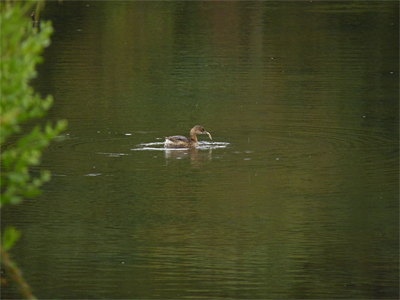
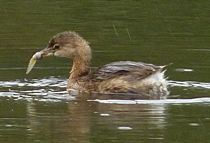
I hadn’t seen one of these little grebes in the Wetlands since March of 2008 when one, then two, showed up and stayed for about five weeks, leaving sometime during the first half of April. At the time, I had hoped that the pair would attempt to nest in the Wetlands.
Our new visitor to the Wetlands is unlike the previous grebe guests, which stayed clear of the boardwalk while people were present. This one apparently has no fear of people and swims right up to the boardwalk, diving, preening, and resting within feet of whoever may be standing there.
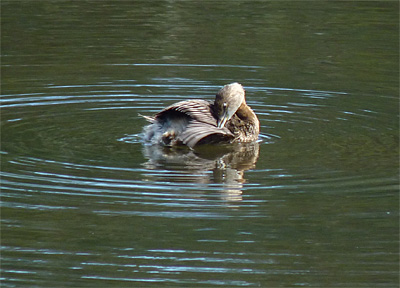
Pied-billed Grebes feed on fish, tadpoles, crayfish, and aquatic insects, diving and swimming underwater in pursuit of those items.
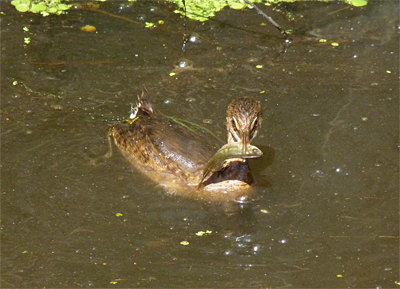
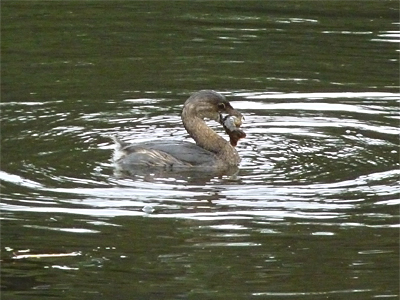
Grebes propel themselves underwater with their feet. Unlike ducks, which have webbed feet, grebes have lobes on their toes. They can put on quite a show while chasing fish about the water.
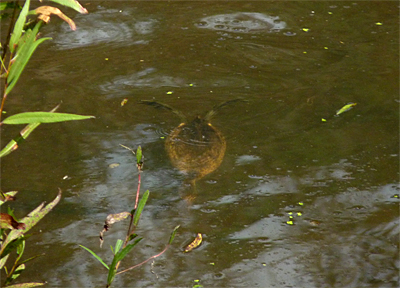
These little grebes (which are more closely related to loons than ducks) have the ability to both dive and “sink” beneath the water creating little, if any, splash in doing so.
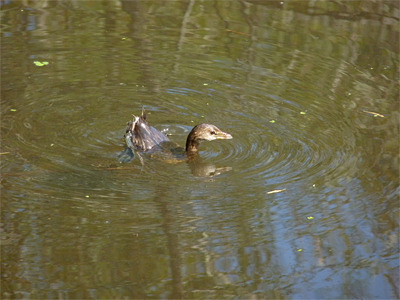
A grebe’s feet are positioned well back on its body. This rear placement of the feet is great for swimming but not so good for walking. Ducks too, have feet situated close to the rear of their bodies, although not quite as far back as in grebes.
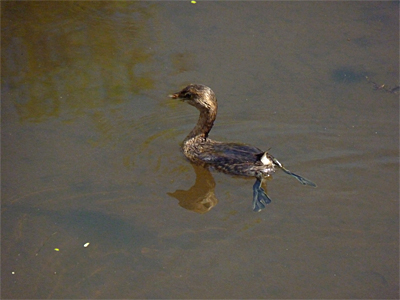
You’ve no doubt seen a duck waddling along on land. Well, imagine the duck’s waddle amplified several times; something between a duck and a penguin. You’re not likley to see a grebe on land except while nesting (which, technically, is not on land at all but usually on a floating matt of vegetation) or during a heavy storm when they are sometimes literally grounded by the weather. Grebes need to run some distance along the water to take flight. With the feet so far back on their bodies they can’t get up enough speed on land to get airborne. A grounded grebe is a very vulnerable grebe indeed.
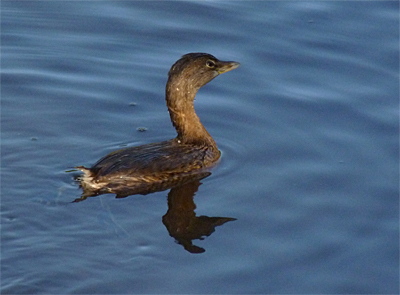
While watching the grebe dive for fish just off the boardwalk leading down into the Wetlands, I noticed the bird glance skyward. I too looked up, just as an Osprey cruised by overhead. I doubt that an Osprey would attempt to take a grebe (stranger things have happened), but it’s a good idea for a bird like a grebe to keep an eye skyward; a passing eagle, or even the local Red-shouldered Hawk, would probably give it a go.
And then, there were two!
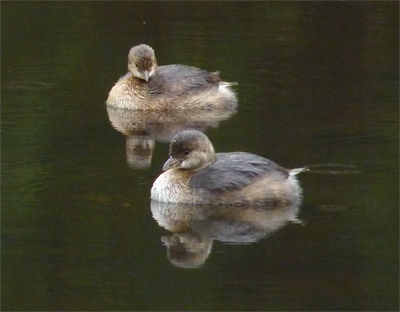
The two grebes appear to be inseperable, diving and fishing together in the Wetlands and putting on a show for all who care to view it.
Elsewhere on the Outdoor Exhibit Area, birds have been moving through in fairly good numbers. Both Northern Flickers and Yellow-bellied Sapsuckers (10/2) arrived during the first half of October along with House Wren (10/1), Wood, Gray-cheeked, and Swainson’s Thrushes, many American Robins, Scarlet Tanagers, and even a Black-billed Cuckoo made a quick appearance, flying within feet of me before fading into the thick vegetation to the right of the Red Wolf Enclosure on 7 October. The thrushes, tanagers, and sapsuckers have been gobbling up the Flowering Dogwood berries which seem to be so abundant this year here at the Museum.
Ruby-crowned Kinglets have arrived (10/2), or at least have been seen in passing and warblers too, have been moving through, including a Nashville Warbler (10/7). Yellow-rumped Warblers are on the scene (10/2). Their arrival traditionally marks the beginning-of-the-end for warbler migration in the fall.
We should expect to see White-throated Sparrows and Dark-eyed Juncos very soon.

[…] this link to see the clarity of the water in the fall of 2009 as a grebe swims around catching fish, tadpoles, and crayfish. Scroll down the photos. In one image, the […]